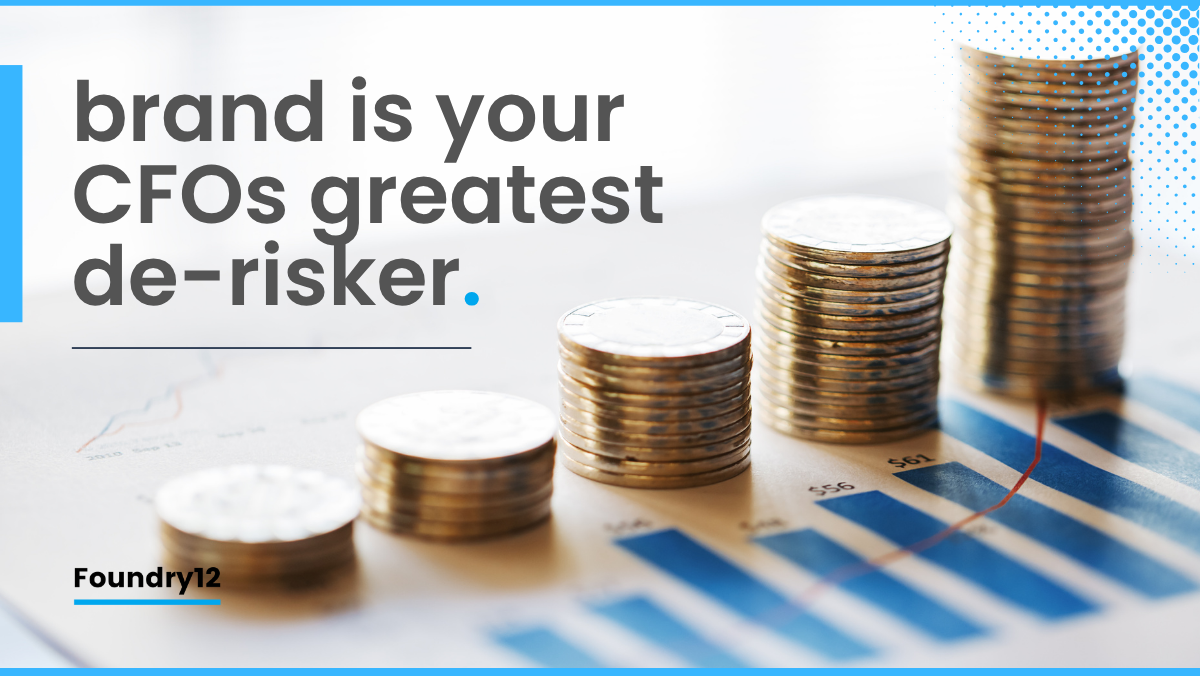Brand is your CFO’s greatest de-risker
There have been a couple of top-notch articles recently. One from Paul Cash on LinkedIn, and another in Marketing Week from Jon Lombardo & Peter Weinberg of Evidenza. Both of them addressing a similar topic: marketers need to stop talking about brand to their internal audience purely in terms of the long-term upside, and instead start framing it as the business’ primary tool for reducing risk.
And they’re right.
Why? Because when you’re sitting across the table from your CFO or Finance team, you can be pretty confident they’re not thinking about upside in the same way Marketing are. Their thoughts are about capping downside. They’re thinking about protecting cashflow, reducing exposure, and making sure the business is doing all it can to minimise risk.
Especially in times of uncertainty, like now, what with difficult market conditions and AI doing its best to cause a little bit of uncertainty, shall we say, over what the future holds in store.
And right there, that’s where the opportunity for marketing is. Because brand is one of the strongest de-riskers a business has.
Brand as an insurance policy
Strong brands act as insurance policies. Through delivering both mental and physical availability, showing up consistently and distinctively, strong brands come to mind when buyers enter the market. What does that mean for the CFO? Brand helps smooth out future cashflows and makes them more predictable, lowers acquisition costs by getting you on a buyers Day 1 shopping list, creates pricing power, and builds trust, which can even help with a bit of forgiveness when things go wrong.
Now that’s not marketing fluff, that’s solid de-risking.
A trusted brand also attracts better talent, partners, and investors because it’s well known and more desirable.
Brand through a CFO lens
The Evidenza Marketing Week piece also shows how the gap between CMOs and CFOs often comes down to how each views risk. CFOs think downside-first. CMOs think upside-first. And to be honest there’s a good argument to be made that the CFO basically runs the marketing department, because they hold the purse strings.
So, when you continually frame brand as “creative disruption,” you’re speaking a foreign language to them. But if you frame brand as risk reduction, then you get their attention because you’re talking their language.
The ways brand reduces risk
The Evidenza Marketing Week piece outlines four clear ways brand protects a business:
- Category optionality – strong brands can adapt and give you the licence to move into new markets when old ones decline.
- Cheaper capital – strong brands are trusted by investors and lenders, meaning they borrow at lower rates, reducing financial risk.
- Customer diversification – strong brands broaden their base and therefore spread their risk.
- Economic resilience – in downturns, trusted brands hold their prices and keep their customers more effectively than weaker brands, and capture share from their weaker rivals.
That’s risk management in action for you.
Why this matters now
In volatile markets, with AI reshaping industries, risk is everywhere. Supply chain, regulatory compliance, digital disruption and cybersecurity all demand risk aware leadership. But brand belongs on that list too. Not as a marketing “nice-to-have,” but as a business-critical risk strategy. Whether that’s to help you grow or cushion you in tough times.
Remember the line / logic ‘nobody ever got fired for buying IBM.’ That’s a brand promise as much as a business one. It’s a psychological insurance policy and an emotional support pillar for decision-makers, especially in the world of B2B where buying groups can involve 6-11 people, purchase consideration lead times are longer, contracts or service agreements are involved, and many products have homogenous features. If you aren’t known at the outset of the buying process you massively weaken your ability to get bought.
The takeaway
So if you’re a marketer trying to secure budget, maybe now’s the time to consider switching your argument. Start selling brand as the greatest de-risker your CFO has within the business.
Position it as the moat, the insurance policy, the downside cap, whatever you want to call it. But in a world where ROI seems to have become king, risk reduction is the most ROI-friendly story you can tell.
And brand is the strongest de-risking strategy your business has.
It builds resilience. It protects. It makes your CFO sleep better at night.
_________________________
Here’s a related post you might also want to have a gander at:



